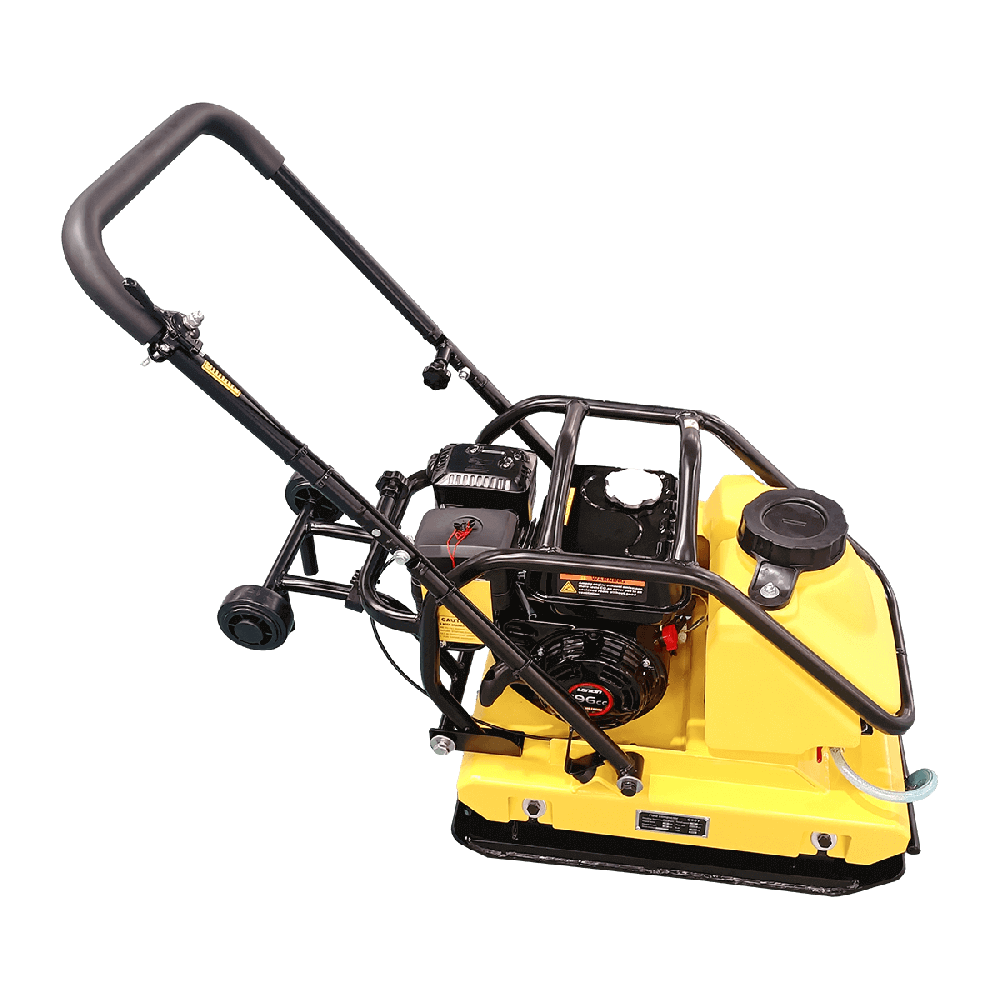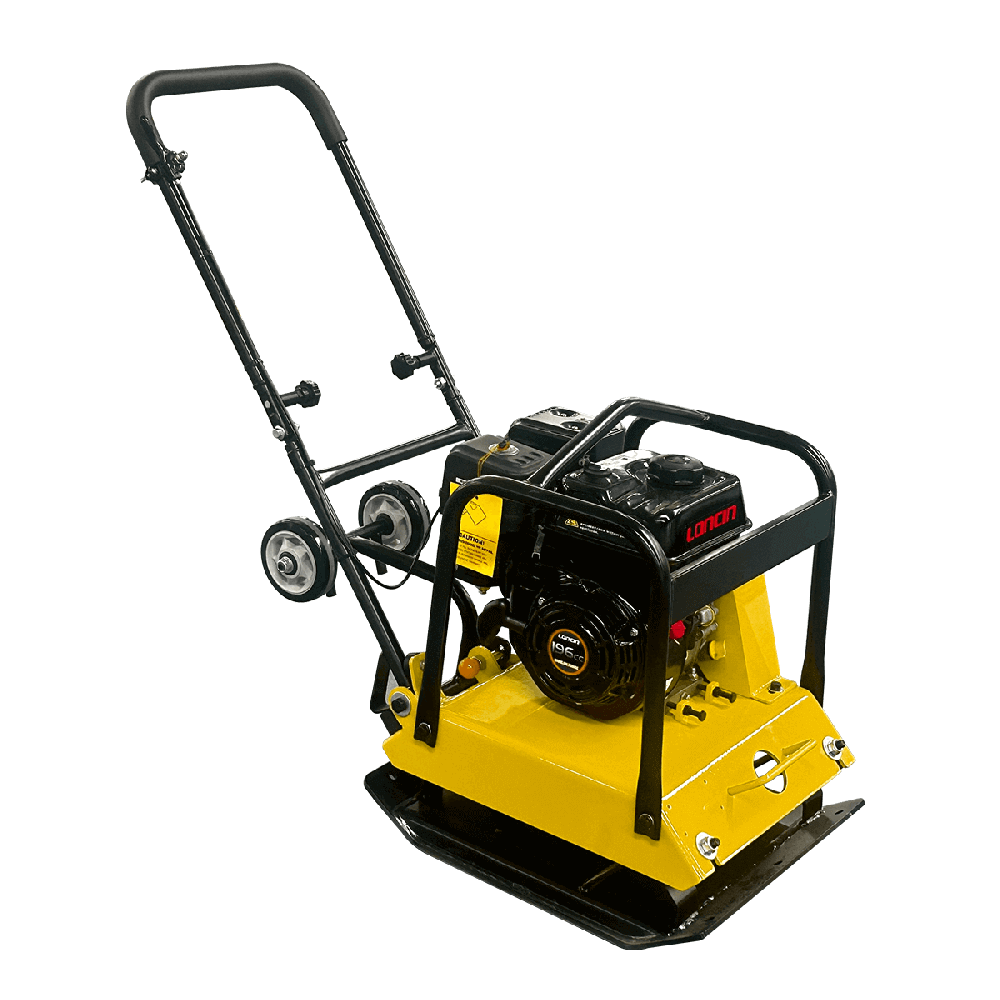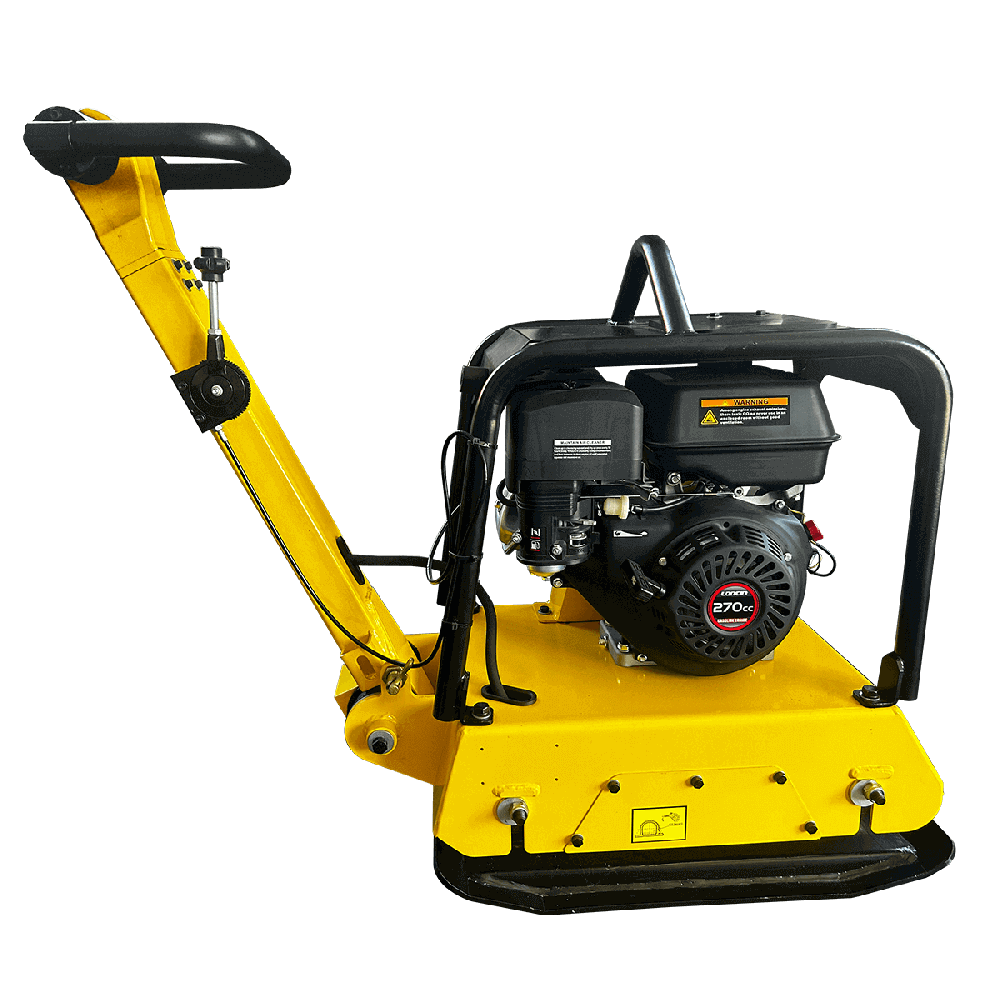plate compactor - all it takes!
petrol engine single plate compactor

C95T 18kn vibrating concrete compactor

196cc engine forward plate compactor

C160 reversible engine powered plate compactor

C80T single direction plate compactor

honda gx160 reversible vibratory plate compactor


Serveice
Professional plate compactor manufacturer
- BISON can efficiently handle large-scale orders.
- Offers numerous flexible payment options.
- Your all-in-one source for plate compactor accessories.
- Provides custom OEM solutions for your unique plate compactor requirements.
- Ensures short lead times and quick shipping from our BISON plate compactor factory!

Application industry
- Road construction: Plate compactors are integral to compacting base and subbase materials for roads, sidewalks, and parking lots. They guarantee a sturdy, resilient base, critical for prolonged durability and security of pavement.
- Landscaping: In these projects, plate compactors are utilized to ready the soil for turf installation, the placement of paving stones, or construction of retaining walls. They help ensure that the ground is properly prepared and strong enough to hold landscaping elements in place.
- Utilities and pipeline work: Recompacting soil is essential after pipelines are installed or cables are laid in trenches. This prevents uneven settling of ground above trench.
- Maintenance projects: The compact size and easy handling make plate compactors ideal for maintenance work and small-scale construction tasks such as patching roads or driveways.
Leave Us Your Info

In many construction and landscaping projects, plate compactor is essential for creating a strong, stable foundation. This robust machine utilizes heavy duty plate to deliver consistent and reliable compaction, effectively compressing soil, gravel and asphalt to guarantee long lasting durability and strength.
This detailed buying guide aims to assist you in selecting perfect plate compactor for your particular project requirements. From various types of plate compactors to essential considerations like plate size, power and vibration frequency, along with useful tips on usage and maintenance. By the end of this guide, you will have necessary knowledge to select plate compactor that provides best performance and great value for your investment.
Let's begin the journey to finding ideal plate compactor machine for your upcoming major project!
How do plate compactors work?
Plate compactors utilize force of vibrating heavy metal plate to compact the ground. This vibration is generated by an engine-powered drive exciter mechanism, which transfers vibrating force to base plate. These vibrations cause heavy metal plates to move up and down rapidly, transmitting force to the ground below. As the plates move across surface, repeated impacts press soil particles tightly together, reducing air pockets and increasing density. The operator guides machine over area to be compacted, ensuring even coverage and consistent compaction.
Benefits of using a plate compactor
There are multiple notable benefits to using a plate compactor, such as:
Enhanced stability: Proper compaction minimizes risk of future settling or shifting, thereby preventing cracks and uneven surfaces.
Enhanced durability: By compacting surfaces, you increase their resilience and reduce susceptibility to damage, thereby prolonging lifespan of your building project.
Enhanced weight support: Compacted soil boosts the load-bearing capacity, crucial for heavy-load areas like driveways and roads.
Time and labor efficiency: Plate compactors automate compaction process, making it faster and less labor-intensive than manual methods.
Financial advantages: Proper compaction minimizes the necessity for expensive long term repairs and upkeep by preventing possible structural issues.
To sum up, plate compactor is essential for anyone looking to build a strong and durable foundation for their construction or landscaping projects. Familiarizing yourself with its functionality and advantages enables you to select a plate compactor tailored to your particular requirements. Keep reading to learn about different types of plate compactors!
Different types of plate compactors
Selecting the appropriate plate compactor for your project is vital for achieving high quality and efficient results. Below are the key varieties of vibrating plate compactors on the market, each designed for particular uses:
Forward plate compactors
Also referred to as unidirectional compactors, are engineered to move in forward direction. They are generally lighter and more compact than other models, perfect for small to medium sized tasks.
Reversible plate compactors
Reversible plate compactors have ability to move both forwards and backwards, enhancing their versatility and efficiency. They can compact larger spaces more swiftly compared to forward plate compactors, making them more appropriate for bigger or more demanding tasks.
Heavy/high-performance plate compactors
They are engineered for the toughest compaction tasks, offering increased power and robustness. Generally feature more potent engines and bigger plates, rendering them ideal for industrial and commercial use.
Specialty plate compactors
Specialty plate compactors are tailored to address specific requirements that standard plate compactors might not fulfill. For instance, asphalt plate compactors are employed to guarantee that paved roads are smooth and uniform.
Factors in choosing the right plate compactor
The choice of right plate compactor depends on project details, materials to be compacted, and type of engine and fuel considerations, among other aspects. Here are several factors to consider when making your selection:
Platen size, material and shape
Platen size: The size of platen affects area you compact at one time. Larger platens can cover more ground quickly, but may not be as easy to maneuver in tight spaces.
Material: Platen material affects durability and performance. Most platens are made of steel or cast iron for long-term use.
Shape: The shape of platen affects compaction efficiency. Rounded edges help with smoother operation over uneven surfaces and reduce likelihood of gouging.
Compacting force and power
Compacting force, usually measured in pounds or newtons, determines machine's ability to compress soil and materials. Higher compacting forces are good for hard, dense materials, while lower forces may be sufficient for lighter tasks.
Frequency and pitch
Frequency, measured in vibrations per minute (vpm), and pitch affect effectiveness and speed of compaction. Higher frequencies are good for fine materials, while lower frequencies are better for coarse or granular soils.
Travel speed
The speed at which a plate compactor travels affects efficiency of compaction process. Faster speeds can cover larger areas more quickly, but make sure speed is adjustable to accommodate varying site conditions and project requirements.
Operating weight
Operating weight affects stability and penetration depth of machine. Heavier plate compactors deliver deeper compaction, though they might be harder to maneuver. Balance weight based on project needs and type of material being compacted.
Maneuverability
Consider the maneuverability of plate compactor, especially for large or complex job sites. Ease of movement ensures efficient use in different areas of project without significant downtime.
Engine type and fuel
Electric plate compactors: Ideal for indoor use or areas with noise and emissions restrictions. Electric models operate more quietly and need less maintenance.
Fuel-powered plate compactors: Ideal for outdoor or large projects where power and portability are critical. These models offer more powerful performance and are not limited by cord length or battery life.

User friendly features
Search for features that promote user comfort, like shock-absorbing handles, adjustable controls, and mechanisms that start easily. These attributes improve handling and minimize operator fatigue.
Portability and maneuverability
Portability and maneuverability are critical, especially if your project requires frequent relocation or working in tight spaces. Compact and lightweight models offer better control and easy transport.
Project types
Think about specific type of project you are handling. Different projects, such as patios, sidewalks, and driveways, have unique requirements:
Patios: A light- to medium-duty plate compactor paired with a medium-duty platen is usually sufficient.
Sidewalks: Medium compaction strength and maneuverability are key.
Driveways: A heavy-duty plate compactor with high-pressure strength is better suited to withstand vehicle loads.
Types of compacted materials
Different materials have different compaction needs. Make sure plate compactor is appropriate for specific type of material you are working with, whether it is granular soil, sticky clay, or asphalt.
Durability and maintenance
Choose a plate compactor made with high-quality materials that can withstand constant use and harsh conditions. The ease of regular maintenance is also critical to life of plate compactor.
Safety features
Safety is critical. Look for features such as emergency shutoffs, guards, and clear operating instructions to ensure safe use.
Cost and budget
While high-end models offer advanced features and durability, make sure your choice fits your budget without compromising on basic functionality.
Brand reputation and reviews
Brands with a good reputation for reliability and positive customer reviews can often offer better support and product longevity. For example, BISON plate compactors.
Continue reading to discover important safety and maintenance advice for using plate compactor.
Tips for operating and maintaining plate compactor
Read manufacturer's manual carefully before operating a plate compactor.
Clear area of any debris, large rocks, or obstacles that could hamper compaction process or damage machine.
Constantly monitor the operation, paying attention to the behavior of machine and surface being compacted to avoid over-compaction or material displacement.
Wear appropriate personal protective equipment. Be aware of your surroundings and ensure there is enough space to operate machine safely, avoiding contact with bystanders and obstacles.
Maintaining your plate compactor
Clean regularly
Check and replace worn parts
Check engine oil, hydraulic oil and fuel levels
Lubricate moving parts regularly
Air filter maintenance
Fuel system care
Store in a dry, safe place
Battery care (for electric models)
By following these recommendations, users can maximize efficiency, safety and life of their plate compactors, ensuring they are well maintained and always ready for next project.
Conclusion
BISON plate compactors are designed with efficiency and safety in mind. Known for their rugged construction, ease of use and reliable performance, they can meet a variety of compaction needs from projects to commercial applications. With intuitive controls and enhanced operator comfort, BISON makes compaction tasks easier.
Invest in a BISON plate compactor today, visit our website or contact us for more information and find perfect plate compactor for your next project.
Faqs
Is a plate compactor worth buying?
Basically, it is more efficient to use a plate compactor for any soil type that does not stick together when picked up. It is rare to find granular soil clods, and even when wet, you will not make mud cakes with it because this soil type does not absorb water. Plate compactors work through a mix of force and vibration.
Are hand tampers as good as plate compactors?
If you are working on a small paving project, you can easily use a basic steel tamper, but most paving projects such as sidewalks, patios, or any larger project will require a plate compactor.
Can you use a plate compactor on soil?
Plate compactors and tampers are commonly used to compact ground materials, such as soil and sand.
table of content
